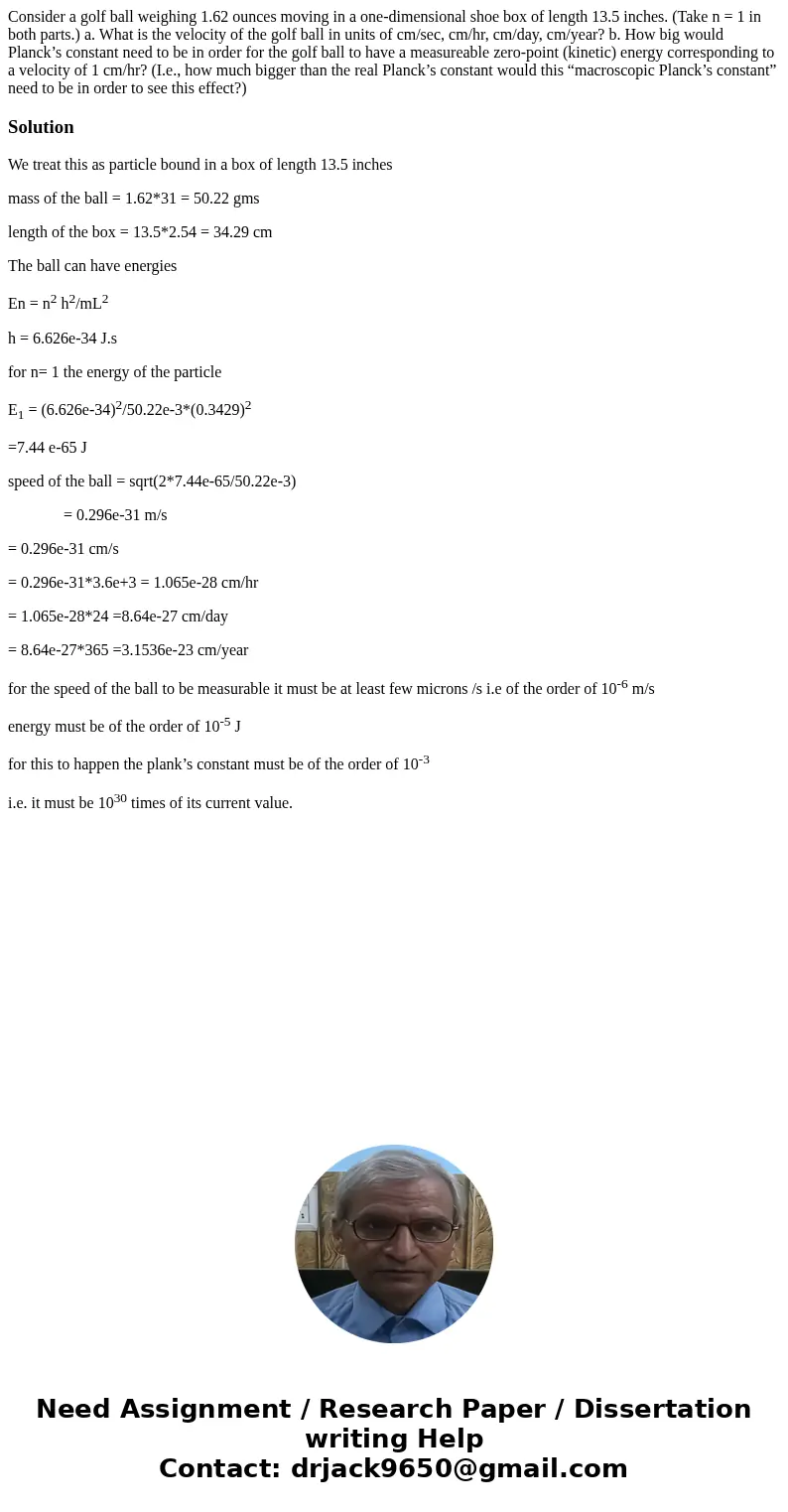Consider a golf ball weighing 162 ounces moving in a onedime
Consider a golf ball weighing 1.62 ounces moving in a one-dimensional shoe box of length 13.5 inches. (Take n = 1 in both parts.) a. What is the velocity of the golf ball in units of cm/sec, cm/hr, cm/day, cm/year? b. How big would Planck’s constant need to be in order for the golf ball to have a measureable zero-point (kinetic) energy corresponding to a velocity of 1 cm/hr? (I.e., how much bigger than the real Planck’s constant would this “macroscopic Planck’s constant” need to be in order to see this effect?)
Solution
We treat this as particle bound in a box of length 13.5 inches
mass of the ball = 1.62*31 = 50.22 gms
length of the box = 13.5*2.54 = 34.29 cm
The ball can have energies
En = n2 h2/mL2
h = 6.626e-34 J.s
for n= 1 the energy of the particle
E1 = (6.626e-34)2/50.22e-3*(0.3429)2
=7.44 e-65 J
speed of the ball = sqrt(2*7.44e-65/50.22e-3)
= 0.296e-31 m/s
= 0.296e-31 cm/s
= 0.296e-31*3.6e+3 = 1.065e-28 cm/hr
= 1.065e-28*24 =8.64e-27 cm/day
= 8.64e-27*365 =3.1536e-23 cm/year
for the speed of the ball to be measurable it must be at least few microns /s i.e of the order of 10-6 m/s
energy must be of the order of 10-5 J
for this to happen the plank’s constant must be of the order of 10-3
i.e. it must be 1030 times of its current value.

 Homework Sourse
Homework Sourse